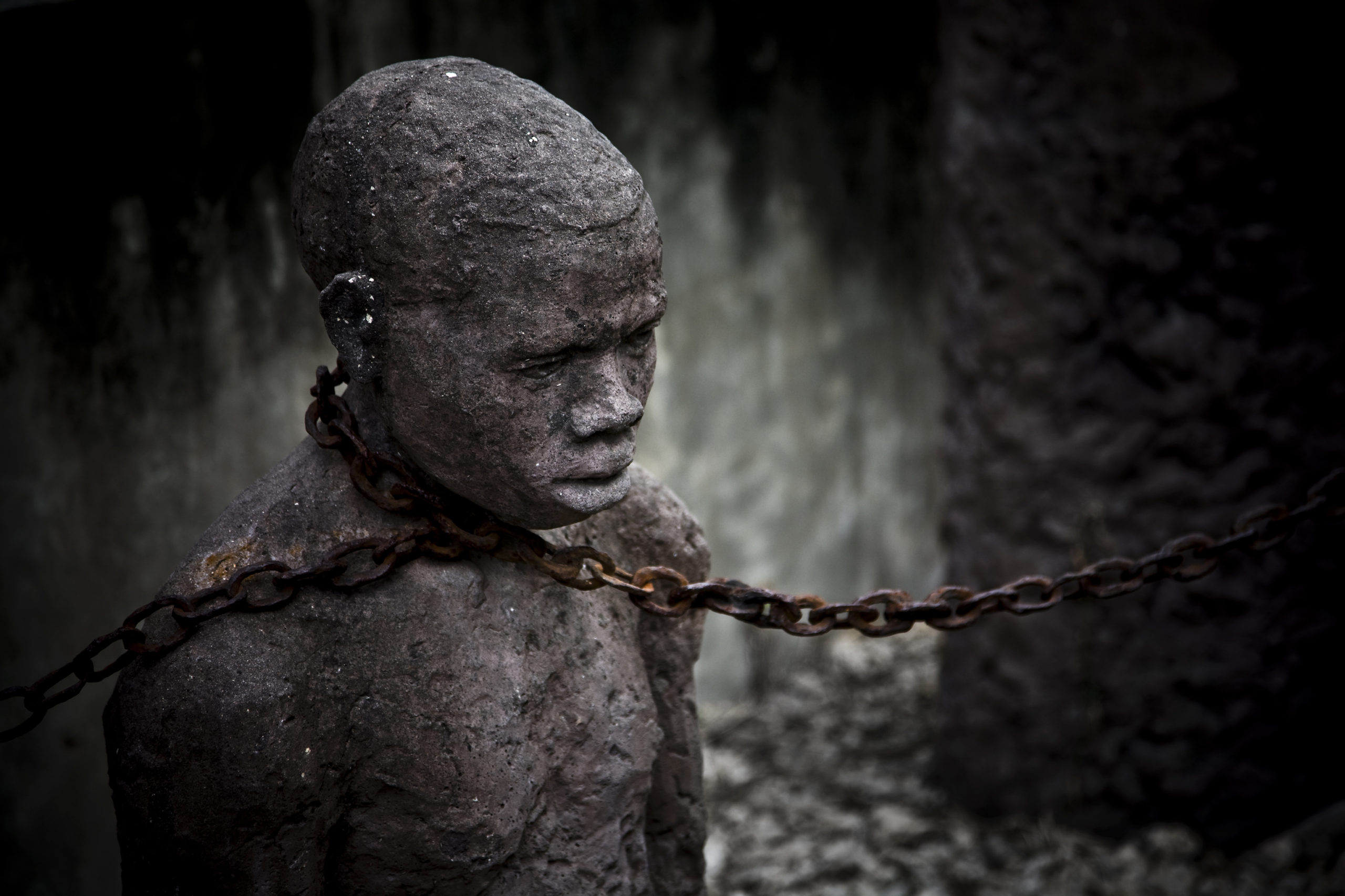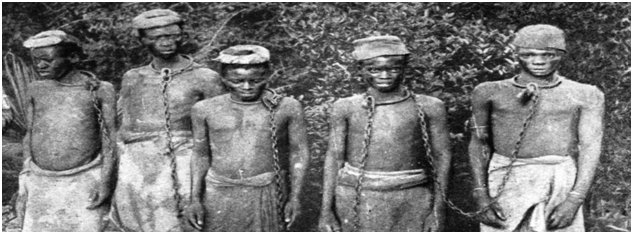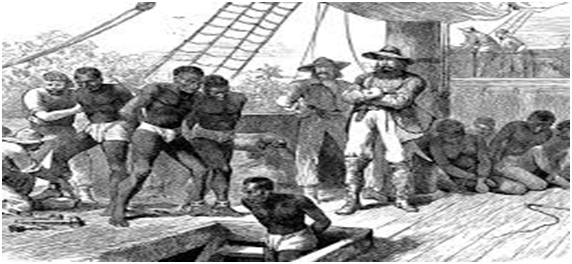
“It’s bad enough… when a country gets colonized, but when the people do as well! That’s the end, really, that’s the end.” – Tsitsi Dangarembga.
Africa, known to be as the “Dark Continent” caters its name because of the remote geographical location. Figuratively, however, there lie several socio-political tropes that condemn its people and their ingenuousness.
America possessing the largest of plantations required the continuous supply of laborers to meet their needs. The transportation of slaves from Africa touched a time period of 16th to 19th century. Within this time-frame, 10-12 million enslaved African souls were shipped to America. The tussle between African tribal leaders to rise to the power pedestal made it a facile task for the colonizers to colonize Africa and exploit its resources.

Africans being chained for the slave trade Image credit: globalnews
Slave trade kick started in the second of the three staged Triangular Trade. Along with arms, textiles and wine, the African slaves who were too deemed as chattels were transported. The 14th century found the Portuguese ships shipping the African serfs to sugar plantations in the eastern Atlantic. The prime hub for the Portuguese to generate the slave trade was in the Congo- Angola area. The 16th century spotted the English and the French reigning over the slave trade business.
With the hike in sugar plantations, requirement of slaves to be cargoes accelerated. Immense poverty pushed the African natives to agree to the conditions laid down by the intercessors appointed by the merchants. Driven by mendicancy, the poverty-stricken Africans became bonded laborers thereby, sealing their fate to an unforeseen world. African men complying with the slave trade brought the downfall and fragmentation of the society and the weakening of the judicial institutions.

The insanity of torturing the humans for slave trade Image Credit: thoughtco
Being triply marginalized, the condition of African women was worse. Lacking male protection, they were discarded as litters, thus falling prey to the carnal desires of the White men. The 18th century saw the flooding of slaves in America estimating three-fifth of the total volume of the transatlantic slave trade. The issue of color discrimination also acted as a major constituent in demeaning the Africanpeople. With the Whites at the pinnacle of the skin-complexion pyramid, it was understood implicitly that the Africans would be knocked down to the lowest segment of the pyramid.

A woman tortured for refusing during the period of slave trade. Image Credit- University of South Wales
The human cargoes reeked with the dead bodies of the slaves. Instances of slaves parched to death became common all-around. Sometimes the slaves were made to lie upon the ship-deck one above another thereby, making a human stack. Rodents could be seen feasting on the dead bodies. This kind of sadistic pleasure and rooting of the panoptic gaze is well-accounted in the autobiography of Olaudah Equaino. A slave named Joseph Cinque’s mutiny against the illegal slave purchase compelled the U.S Supreme Court to order for the slaves’ return to their land.
The year 1833 saw the outlawing of slavery throughout its empire. Furthermore, the gradual awareness among the African slaves to attain their freedom and retain their identity sparked mutinies and rebellions in many parts of West Indies and America. Even though the physical brutality is over for the blacks, the mental oppression that they still endure is very much a reality. The postmodern world still hasn’t gone over its discrimination towards the African race and will it ever be able to bowl over it is still a grave issue for addressal.






